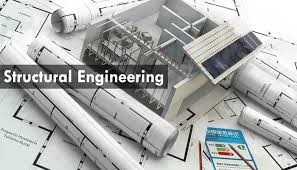The Future of Structural Engineering—Materials Science Innovations Transforming Design and Safety
The rapid advancements in materials science are fast changing the way things are done in structural engineering. Self-healing concrete, lightweight composites, and smart materials are some of the innovations being developed and are yet to transform how engineers design and build structures. Such new materials do not aim at durability but also attain efficiency and sustainability.
Those are the new tools by which engineers are better equipped for design and analysis. Among these are technologies that include 3D printing and computer modeling, able to create structures considered hitherto impossible to make. These are setting new boundaries as to what could be achieved in construction and infrastructure.
Indeed, the future is bright for both engineers and society at large as the industry opens its arms to embracing change. New innovative materials, coupled with cutting-edge technology, will help in creating safer and more sustainable structures that will be able to overcome the challenges of tomorrow.
Key Takeaways
- New materials impart strength and efficiency to structures.
- Advanced technology helps engineers design complex and sustainable projects.
- The future of structural engineering is oriented toward safety and innovation.
- Innovative Materials Shaping the Future
- The field of structural engineering is changing with new materials coming out that offer better performance and durability. Material innovations are really changing the way structures are designed and constructed today. Here are three key materials making an impact.
Self-Healing Concrete and Its Impact
Self-healing concrete is a new material with the basic property of self-repair in the case of cracks. It contains some special additives or bacteria which come into play when water enters a crack. This forms a gel that fills the crack, thus restoring its strength.
This technology is likely to ill-config increase the life expectancy of the structures. Less frequent repairs will reduce maintenance costs and make buildings last longer. The self-healing ability in concrete is very helpful, especially in areas where extreme weather prevails and cracks develop very fast.

Advanced Composites and Lightweight Structures
Advanced composites combine two or more materials to come out with a lighter yet stronger product. Examples include carbon fiber and glass fiber reinforced plastics. These are used in bridges, buildings, and other structures to provide high strength at less weight.
It enables lightweight constructions that allow innovative designs, and thus easier transport. Advanced composites achieve structures that are able to resist very aggressive conditions while consuming less energy. Besides, due to the flexibility in design, advanced composites allow architects to create forms that were not imaginable with conventional construction.
Nano-Engineered Materials and Molecular Science
Nano-engineered materials are changing the face of structural engineering at the molecular level. Through manipulation at the nanoscale, engineers can improve a material’s strength, durability, and resistance to corrosion.
For instance, carbon nanotubes increase strength without adding weight. Such materials can literally transform the way buildings are designed to make them more resilient. The technology is still under development but shows very great enhancements in future infrastructure.
This mix of new materials is bringing a new definition to what can do in structural engineering. Each material has special benefits that can lead to buildings that are more secure, more efficient, and even sustainable.
Technological Advancements in Design and Analysis
Recent developments in technology are changing the way engineers design and analyze structures. Some of the key innovations include BIM, 3D printing, and artificial intelligence. All these tools and techniques bring improvements in efficiency, accuracy, and sustainability to structural projects.
Building Information Modeling Evolution
BIM technology has made possible a different way of constructing buildings and infrastructure. It provides a digital representation of physical and functional characteristics. It works like a platform between engineers, architects, and contractors for proper collaboration.
A few key benefits of BIM are:
- Improved project visualization.
- Better coordination among teams.
- Fewer errors hence reduced costs.
- It also helps in the whole life cycle of a building, thus reducing the hurdle of maintenance management and renovations. As BIM evolves, advanced simulation tools predicting structural behavior under conditions are being integrated.
3D Printing for the Fabrication of Structural Components
3D printing is the most radical development in the fabrication of structural components. It facilitates the fabrication of complex shapes that conventional fabrication methods cannot achieve.
Some of the advantages of 3D printing are that it reduces the amount of wasted material by a great quantity.
On-demand parts customization
Faster construction time
Materials used in 3D printing, such as concrete and polymers, enhance the structures for durability and performance. As this technology continues to evolve in the future, it will definitely be a significant part of sustainable building processes.
Artificial Intelligence in Structural Optimization
AI is changing the face of structural engineering through design optimization. AI algorithms are capable of procuring vast reams of data to find the best material and shape for structures.
Some benefits associated with using AI are:
- Faster design processes
- Increased precision in calculations
- Prediction of structure performance
AI tools can also be used to gauge environmental impacts and promote sustainability. The evolving role of AI in structural engineering will lead to safer and more efficient
Also Read :
- The Rise of Quantum Computing: What It Means for Technology
- The Future of Mobile Technology: Trends to Watch in 2024
- Blockchain Technology: Understanding Its Impact Beyond Cryptocurrencies
- Computer Engineering: The backbone of the development of modern technology.
- Climbing technology